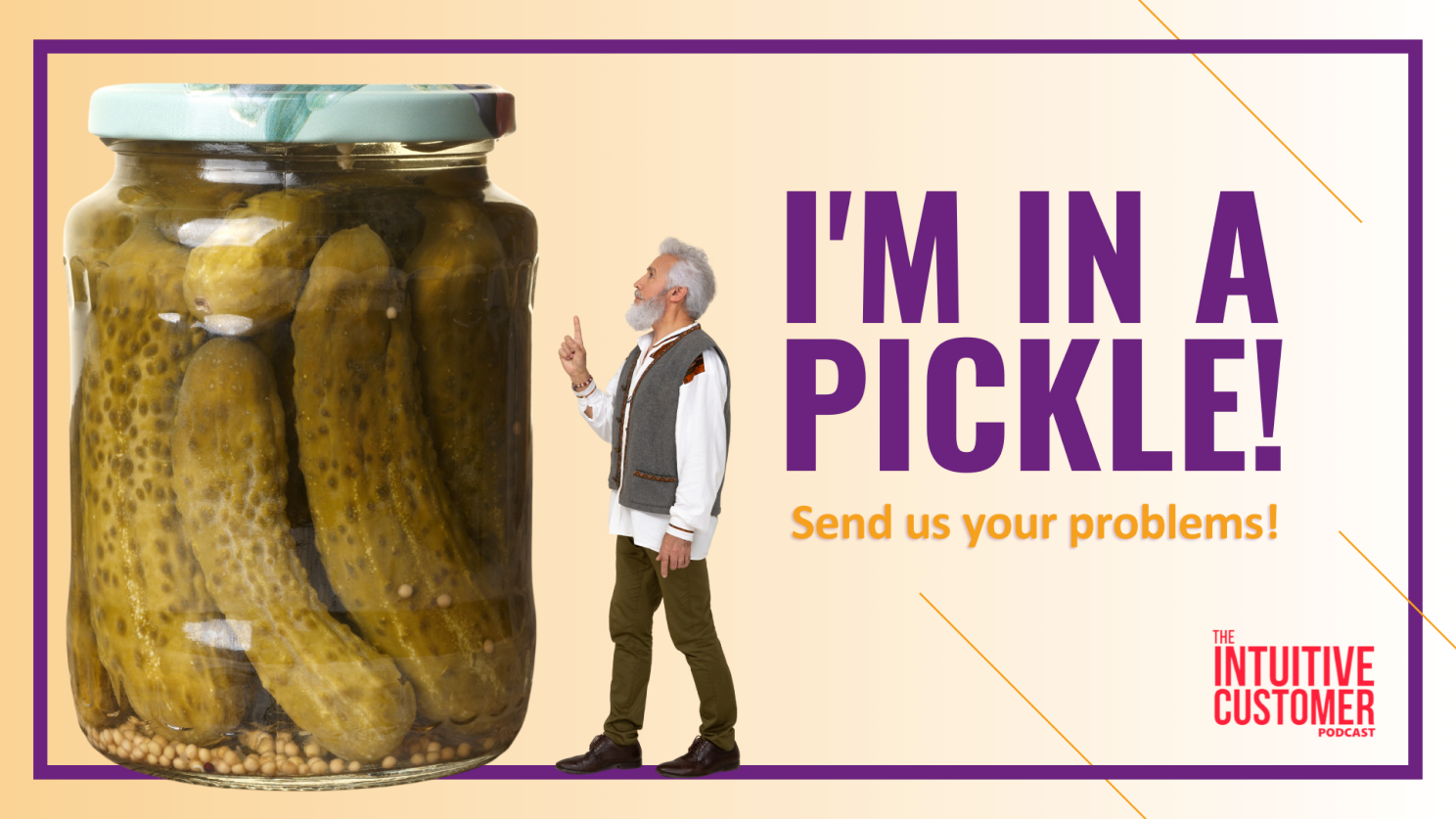Many organizations do not know what customers expect from their experience and to their detriment. Understanding customer expectations is fundamental. Fail to meet them, and you have, well, failed. You failed to surprise and delight the customer, and you failed to provide an excellent experience that inspires the customer loyalty necessary for customer-driven growth.
We talked about customer expectations on a recent podcast. From a customer theory perspective, customers need expectations to evaluate their experience by comparing what happened to what they expected to happen.
How Do We Form Expectations?
Expectations form a lot of ways. Sometimes we have them based on past experiences with the company. Others originate from experiences we have for similar channels of business. For example, we compare all online shipping speeds to Amazon Prime’s 2-day delivery timeframe; anything else is ridiculously slow.
In addition to past experiences, we form our expectations spontaneously or vicariously, especially for novel experiences. For example, some billionaires have gone up into space as space tourists for the first time.

Even though they’d never done anything like that before, I guarantee they had expectations about going into space, likely drawing on movies or books or conversations with astronauts.
I use an exercise when I am a speaker that demonstrates how this spontaneous formulation works. I ask the audience to close their eyes and imagine they have arrived in the Congo. Most people haven’t been to the Congo, so I ask them what they imagine they are seeing. Many people talk about jungles or lush vegetation, and others might describe how they feel with words like hot and humid. Bear in mind that almost nobody I have ever done this exercise with has been to the Congo, but they all have expectations.
We create these expectations because we never walk into something with a blank slate. So, we need expectations as a point of comparison.
Organizations Should Understand Both Rational and Emotional Expectations
Most organizations have a good understanding of customers’ rational expectations, like what they expect for delivery, which we have already established is a maximum of two days. Most companies also know that return processes have expectations, too. We only want to click so many times before throwing the mouse across the room, and companies are aware.
The question then becomes how in tune with customers’ emotional expectations are you? My guess is not very. In my estimation, 95% of businesses do not understand their customers’ emotional expectations or how they change throughout the customer journey.
We did some work with a home improvement company some time ago. We learned that customers’ emotional expectations for the sales call were almost fearful. Most were concerned about feeling pressured into buying something they didn’t want. As a result, we noticed that customers put up protective measures. So, we addressed that in the language and pace of the sales call with the team.
After the sale, we noticed those protective measures come down…until installation comes around. Then, they were back! Customers had anxiety about the installers knocking about in the house. So, it was essential to address those feelings next.
 Understanding emotional expectations are essential. Without seeing these softer-side moments in your experience, you cannot respond and make it better for customers. If you do not manage the situation correctly, you reinforce their suspicions, leading to nothing good for your bottom line.
Understanding emotional expectations are essential. Without seeing these softer-side moments in your experience, you cannot respond and make it better for customers. If you do not manage the situation correctly, you reinforce their suspicions, leading to nothing good for your bottom line.
The One Thing You Can Count on Is Change
Customers’ expectations are not a static thing. Instead, they vary based on whether they have had a previous experience, how many times they have had that experience, and other influences, like, say, a global pandemic.
One could argue that unmet expectations are all a response to weariness with a global pandemic. However, that’s an excuse because the disappointment so many customers feel today isn’t all pandemic-related.
A few weeks ago, we had David VanAmburg from the American Customer Satisfaction Institute (ACSI) on the podcast, and he addressed this issue. In March 2020, at the onset of the stay-at-home orders, everyone knew there would be problems with business as usual. People understood the difficulties in dealing with this “unprecedented” situation (Wasn’t that a popular word in 2020?). However, the results of the declining ACSI were from the ten years before 2020. The decline and stagnation in customer satisfaction were not because people had unreasonable expectations during the pandemic. Perhaps a better summary is that the problems started long before the pandemic, which is doing nothing to help things as it drags out.
Also, it is easy to blame these poor outcomes on unreasonable customer expectations during the pandemic. However, customers satisfaction issues are rarely that simple. Furthermore, that passive approach will not get you anywhere suitable for your experience.
Moreover, some organizations are using COVID as an excuse for cutting costs in the experience area.

For example, as we enter year three of the global pandemic, are the high number of calls you hear about over contact centers’ hold recordings unexpected? Or would it be more accurate to say that those organizations don’t want to put their resources in the call center right now, so you have to wait longer for help?
Plus, that was in the hold message even before COVID. So, again, is it unexpected if it happens day after day? Maybe at some point, you should start expecting that number of calls and plan for it in your staffing.
So, What Should You Do?
There are a few things to remember as you address this area of customer expectations in your experience. First, people always need a Reference Point to compare what’s happening and evaluate it. A lot of times, expectations serve as these comparisons. Therefore, determine what people expect from your experience from the first contact.
Assess your current experience against these expectations. Will it satisfy and delight them to encounter your experience? If yes, then lean into that and play it up for them. If not, it might be time to reassess how you are doing things and adjust. It would be best if you met those expectations.
However, if your experience is falling short of expectations, it might be time to get customer expectations to accept another set of expectations. For example, if you had an early iPhone and were coming from having a Nokia brick phone (I’m aging myself here.), you might have been surprised at the reduction in battery life between the two phones.
For those of you that never experienced a Nokia’s battery life, you charged the phone once every two weeks. It was amazing how long these bricks could last. The early iPhones only lasted around four hours (!!). So, you can see how that might have fallen short of people’s expectations.
However, when Apple continued to message that the iPhone was more than a brick phone, that it was a computer you could hold in your hand, it gave customers a new reference point. After all, the current laptops of the day only lasted around two hours unplugged (we did have it hard back then, didn’t we?). Therefore, what was once a bad thing, battery life being so far below expectations for a phone, switched to being a good, even reasonable thing.
Building on that idea of reframing Reference Points, we were also more forgiving about the battery life on the iPhone because of the perceived value we had for its functionality. We were much more willing to have the pain of the extra charging for the iPhone because of the things we could do with it besides make and receive calls.
Also, remember that these expectations are present even if this is a customer’s first time interacting with you. Newcomers bring expectations of what dealing with you is like, not just about rational things like ordering ease, clear communication, and shipping dates. They also show up with emotional expectations, an area about which I’d wager many organizations have no clue.
So, it would be best for organizations to assess the customer’s emotional journey through the experience. Once you have identified the emotional expectations, determine how you can influence those moments to the proper emotional outcome. There should be specific language and actions at each moment that enhances these moments to meet and exceed the customers’ emotional needs.
In addition to emotional expectations, people often bring their sensory expectations into experiences. For example, in my Congo exercise, I often hear people tell me that it’s going to be hot when they get there. However, the Congo isn’t always hot in the center of the country and south of the equator; they have a cooler, drier season in the winter. So, you could think it will be hot, pack for that, and then arrive to winter weather and be surprised. The same thing can happen in your experience with sensory expectations. So, whenever possible, set reasonable expectations for people to anticipate the conditions and bring proper expectations with them.
All these things related to customer expectations are circular. The rational things they expect, the emotional and the sensory, influence customers’ evaluations. So, understanding each of those touchpoints is essential. Then build that into your Journey Map.
So, you see customers need expectations. They need them to judge your experience. They compare what the expected to happen to what actually happened and decide how they feel about it. Your goal is to anticipate these expectations so you can meet or exceed them—and help them decide to come back.
Despite this fundamental concept, a lot of companies don’t understand customer expectations and it isn’t good for their experience outcome. By taking a different approach and knowing what your customers expect, you could make the changes necessary to come out ahead of these companies. We expect that will do many great things for your bottom line.
If you have a business problem that you would like some help with, contact me on LinkedIn or submit your pickle here. We would be glad to hear from you and help you with your challenges.
There you have it. No promotions, no gimmicks, just good information.
Think reading is for chumps? Try my podcast, The Intuitive Customer instead. We explore the many reasons why customers do what they do—and what you should do about it. Subscribe today right here.



